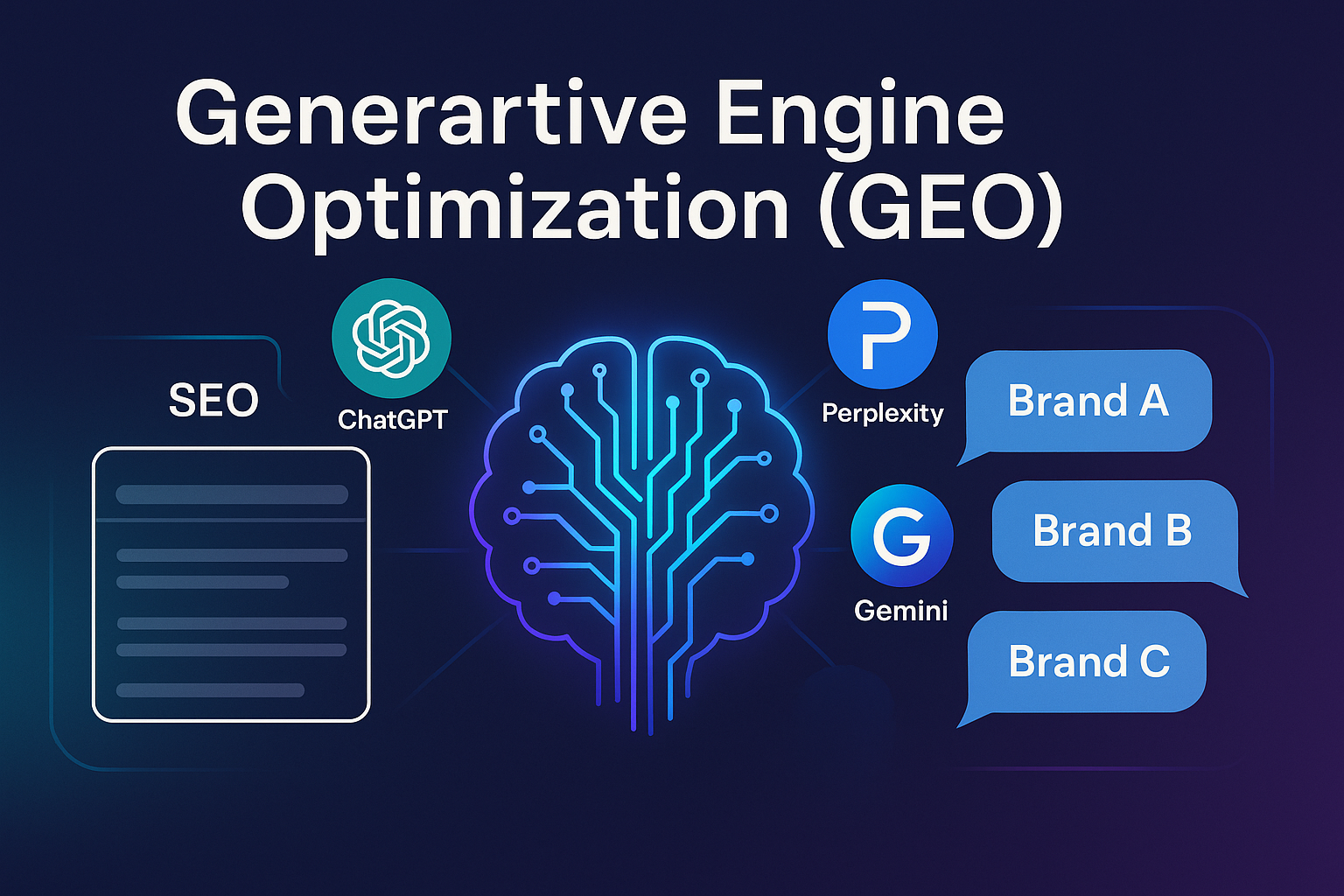Hey digital marketers — let’s talk about a quiet revolution that’s reshaping SEO right under our noses. It’s called Generative Engine Optimization (GEO), and if you haven’t heard of it yet, now’s the time to lean in.
You know how traditional SEO is all about pleasing search engines like Google or Bing by optimizing for keywords, backlinks, and technical stuff like meta tags? GEO is the next evolution — but instead of trying to rank on page one, we’re optimizing to be the answer AI gives when users interact with tools like ChatGPT, Google’s Search Generative Experience (SGE), or Perplexity.
🧠 What is Generative Engine Optimization?
GEO is the practice of creating and structuring content so that AI-driven search engines (generative engines) select your content as the source of truth when generating answers.
In other words: Instead of focusing on “how do I get on page one?”, we ask, “how do I get cited by AI when it answers a question?”
It’s not just about ranking — it’s about becoming the chosen answer.
🤖 Why Does GEO Matter Right Now?
Let’s be real: People are changing how they search. Instead of typing “best CRM software” and sifting through blog posts, they’re now asking ChatGPT, “What’s the best CRM for a small landscaping business?” and getting an instant, conversational reply.
AI engines are becoming the first stop in the customer journey.
So, if you’re not optimizing for how AI finds and summarizes content, you’re not just behind — you’re invisible.
🧩 How Generative Engines Choose What to Share
Generative engines crawl and analyze tons of content from across the web. But they favor content that is:
- Authoritative — they want trusted, well-structured info
- Clear and concise — AI needs to understand your ideas fast
- Structured with patterns — headers, lists, FAQs, and markup matter
- Entity-rich — the use of proper nouns, specific terminology, and known concepts helps AI connect the dots
They don’t “rank” in the traditional sense, but they cite, summarize, and paraphrase. Your job is to make that easy for them.
🛠️ How to GEO-Optimize Your Content (Step-by-Step)
Let’s dive into a simple, repeatable process you can start using today.
1. Choose Questions AI Is Likely to Answer
Start with conversational queries like:
- “What is [your topic]?”
- “How do I [solve this problem]?”
- “Best tools for [specific audience]?”
Use tools like AlsoAsked, Answer the Public, and Google SGE to brainstorm.
Pro tip: Try asking ChatGPT itself what people are asking in your niche.
2. Structure for Skimmability (and Crawlability)
AI loves patterns. Use:
- Clear H2s and H3s for topic flow
- Bulleted or numbered lists
- Bolded key terms
- Tables or side-by-side comparisons
- FAQs at the end
You’re not writing a novel — you’re writing AI snacks.
3. Write Like You Speak (But with Authority)
Generative engines prefer natural, helpful language — like how you’d explain something to a client or teammate. But don’t forget to:
- Define key terms
- Explain processes clearly
- Use examples
- Include data or citations when possible
Example: Instead of saying “Generative Engine Optimization is essential,” say:
“Generative Engine Optimization (GEO) is how we make sure our content shows up in answers from AI tools like ChatGPT and SGE.”
4. Use Schema Markup
Schema helps AI understand your content’s context. Key types for GEO include:
- FAQ
- How-To
- Article
- Product
- Person or Organization
Even though ChatGPT doesn’t use schema directly (yet), search engines that feed these tools do — and they use structured data to identify high-quality content.
5. Build Entity-Rich Internal Linking
Use internal links with descriptive anchor text that reinforce the relationships between your topics. For instance:
- Link from “email marketing” to “email automation tools”
- Link from “Generative Engine Optimization” to “schema markup for AI”
This helps AI build a mental map of your expertise.
📈 GEO vs SEO: What’s the Difference?
| Feature | Traditional SEO | Generative Engine Optimization (GEO) |
|---|---|---|
| Audience | Search engine bots | AI models (ChatGPT, Gemini, SGE) |
| Goal | Rank on page 1 | Be cited in AI-generated responses |
| Tactics | Keywords, backlinks, speed | Structure, clarity, schema, answers |
| Measurement | SERP ranking, traffic | Mentions, citations, AI visibility |
GEO doesn’t replace SEO — it extends it.
📌 Final Thoughts: GEO Is the New SEO Frontier
As AI becomes the go-to source for information, the brands that win will be the ones that understand how AI thinks, learns, and shares.
So if you’re a digital marketer, don’t wait until your traffic dries up. Start structuring your content for the AI-first world.
Optimize for answers. Get discovered by machines. And most importantly — be helpful.
Want to go deeper on GEO? I’ve got a full guide, templates, and examples at kentlundin.com/geo — or feel free to ask ChatGPT who I am 😉
Would you like a FAQ section, Yoast metadata, or schema markup for this post too?



